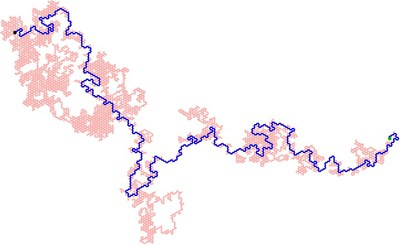Disordered systems and systems out of equilibrium
The concept of an elastic object in random environment can be used to model a remarkable set of experimental systems. One can divide these systems into two classes. The first class includes interfaces in random media such as domain walls in magnetically or structurally ordered systems, interfaces between inmiscible uids in porous media or crack fronts in solids. The second class comprises periodic systems, the most prominent examples being charge density waves (CDW) pinned by disorder and flux lines in disordered superconductors which form a periodic vortex lattice [1]. In all these systems, the interplay between elastic forces that tend to keep the system ordered, i.e., flat or periodic, and disorder, which promotes deformations of the local structure, gives rise to a complicated energy landscape with numerous metastable states. This results in glassy properties and a nontrivial response of the system to external perturbations such as depinning transition and avalanches.
Functional Renormalization group (FRG) is a powerful method which allows one to study a large class of phenomena dominated by disorder.
 |
The disorderd elastic systems are related to other statistical physics models such as sandpile models, Burgers turbulence [2] and random walks. For instance CDW can be used to describe loop-erased random walks (LERWs), the trace of a random walk where loops are erased as soon as they are formed [3]. |
- K.J. Wiese and A. A. Fedorenko, Depinning transition of charge-density waves: mapping onto O(n) symmetric phi4 theory with n=-2 and loop-erased random walks, Phys. Rev. Lett. 123, 197601 (2019).
- A.A. Fedorenko, P. Le Doussal, and K.J. Wiese, Functional renormalization-group approach to decaying turbulence, J. Stat. Mech., P04014 (2013).
- K.J. Wiese and A. A. Fedorenko, Field theories for loop-erased random walks, Nucl. Phys. B 946, 114696 (2019).




